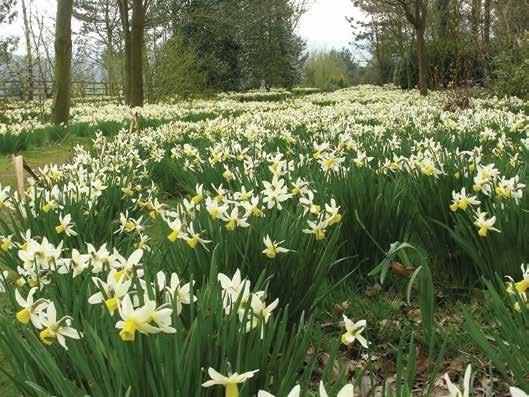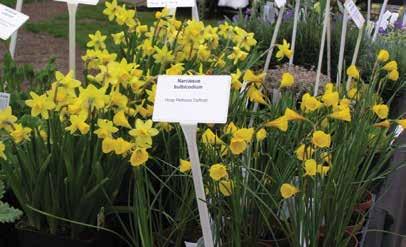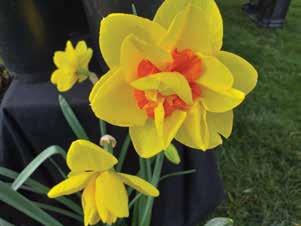
3 minute read
Daffodils
Daffodils Spring’s Golden Trumpets
by Martin Blow
Advertisement
“Daffodils, that come before the swallow dares, and take the winds of March with beauty” – Shakespeare is not the only poet to be inspired by the sight and scent of daffodils in early spring and likewise gardeners are beguiled by their beauty.
As well as the old favourites like the giant “King Alfred” there are miniature types for alpine gardens and all sizes in between, so every garden can find space for Narcissus, be it a large drift or just a few miniatures growing in pots. Most are very accommodating, growing in most conditions in sun or a little shade, however some species require good drainage. Most benefit from being kept watered during flowering.
The bulbs are usually planted at a depth of roughly twice their height eg a 5cm bulb would be planted with its top about 10cm below the soil. Plant large bulbs around 15cm apart and miniatures 10cm apart. If you are naturalising the bulbs in grass don’t be too precise with spacing – toss the bulbs onto the soil at the approximate distance, moving apart any that fall too close together.
The best time to plant bulbs is August to October or November, although later planting can sometimes succeed. Don’t panic this spring if you’ve forgotten to plant in autumn as you will find a wonderful selection of pot grown plants at Plant Hunters’ Fairs in March and April and these can be planted out straight away.
Once the flowers fade, they should be deadheaded as producing seed weakens the bulbs and lessens next year’s flowering. A good way to deadhead a large drift is with a thin whippy stick to behead them with a deft flick of the wrist as you walk along. Don’t be tempted to remove the leaves before they die off naturally as this weakens the plant as well. Some growers recommend allowing the dead leaves to remain to feed the soil as well. Clumps can be divided in summer: store the bulbs dry if necessary, before replanting from late August. It is also possible to grow Narcissus from seed although you will have to be patient for them to flower.
People ask what the difference is between Daffodils and Narcissus? Narcissus is the scientific name for all flowers of this type; Daffodil is the common name for Narcissus pseudonarcissus, or Trumpet

“She turned to the sunlight and shook her yellow head,

And whispered to her neighbour: ‘Winter is dead.’”
Narcissus. Narcissus enthusiasts classify the plants by their colour and shape and length of the trumpet.
Another common question is why do plants go “blind” – producing all leaf and no flower? Usually this is due to planting too shallowly but may be due to removing the leaves too soon after flowering; lack of fertiliser or failing to deadhead.
All parts of Narcissus are toxic if eaten, the bulbs most so, causing nausea, vomiting, abdominal pain, and diarrhoea. They can also cause irritation and burning sensations on the lips and mouth and skin irritation. These symptoms can persist for up to three hours.

Janet and I run Special Perennials - we sell at Plant Hunters’ Fairs throughout the season. We will be at the Plant Hunters’ Fairs at Bramall Hall, Stockport on Sunday 5 April; The Dorothy Clive Garden, TF9 4EU (4 miles south of Bridgemere) on Sunday 12 & Monday 13 April; Cholmondeley Castle, Malpas SY14 8AH on Sunday 26 April and at Adlington Hall, Macclesfield on Sunday 10 May. All gardens offer half price or better entry for these special events days. Please see www.planthuntersfairs.co.uk for full details of these and other fairs.
www.specialperennials.com













